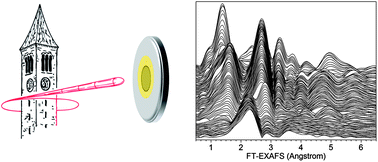The pursuit of energy storage systems with high energy density has revealed several exciting possibilities, including the unexpectedly reversible conversion reactions between metal oxides and lithium for lithium ion battery anodes. The mechanistic complexity of the drastic chemical and structural changes as well as the sensitivity of the reaction intermediates and products to ambient conditions mean that the reaction mechanism is best studied by non-destructive techniques in the native battery environment (in operando). This work applies synchrotron X-ray diffraction (XRD) and X-ray absorption spectroscopy (XAS) to directly observe the conversion reaction of a Mn3O4 anode previously shown to have promising electrochemical performance. The results enable the assignment of electrochemical features to specific reactions, including the formation of LiMn3O4, MnO, metallic Mn, and non-metal-centered reactions, and elucidate the difference between the first and subsequent lithiation reactions. In operando XAS clearly shows that a significant fraction of the charge is stored in non-Mn-centered reactions, a result with serious implications for Mn3O4, in particular, and other metal oxide conversion anodes, in general. This study emphasizes the importance of in situ/in operando studies on next-generation electrode materials to confirm that the observed charge transfer is due to the desired electrochemical reactions.

You have access to this article
 Please wait while we load your content...
Something went wrong. Try again?
Please wait while we load your content...
Something went wrong. Try again?


 Please wait while we load your content...
Please wait while we load your content...